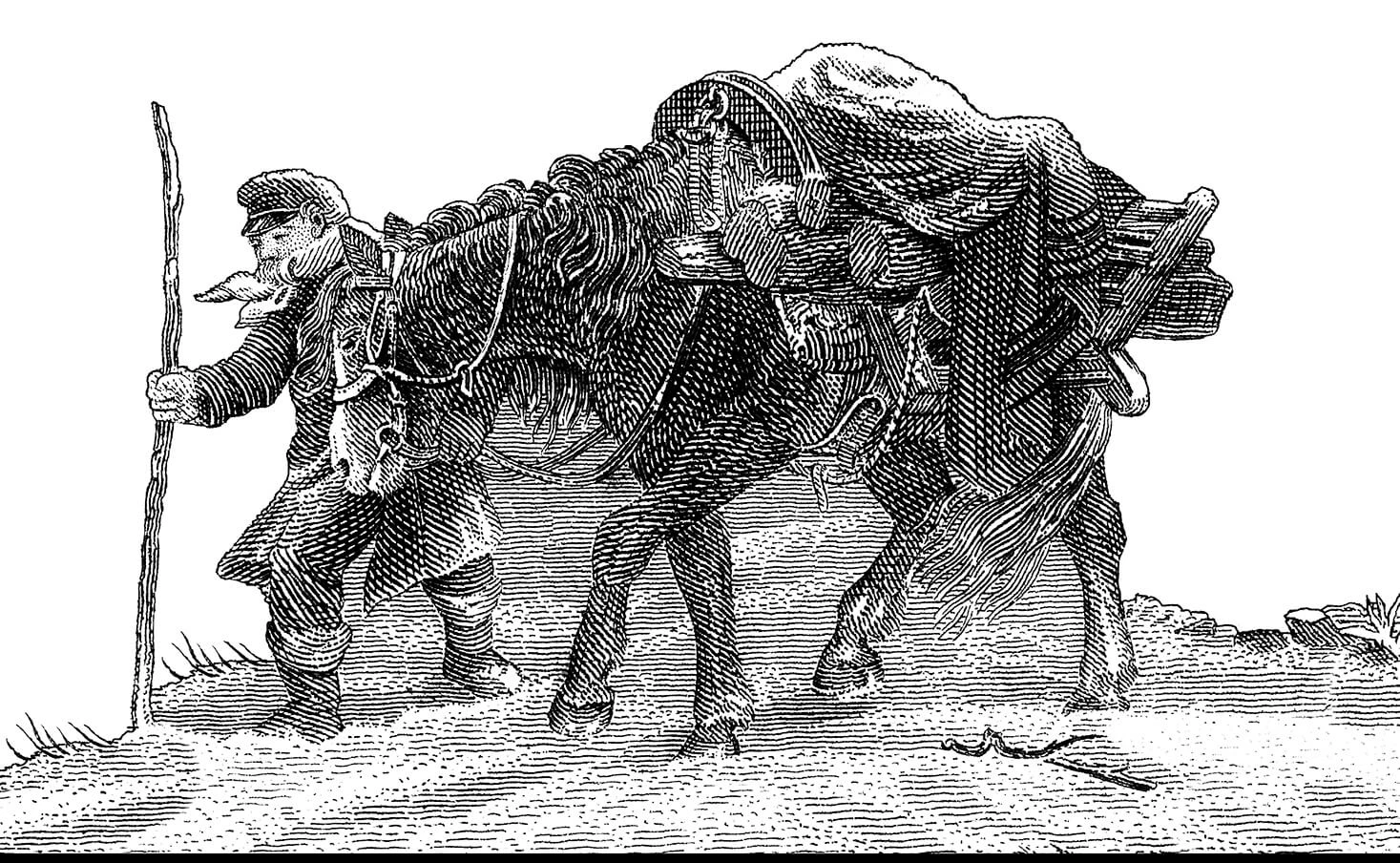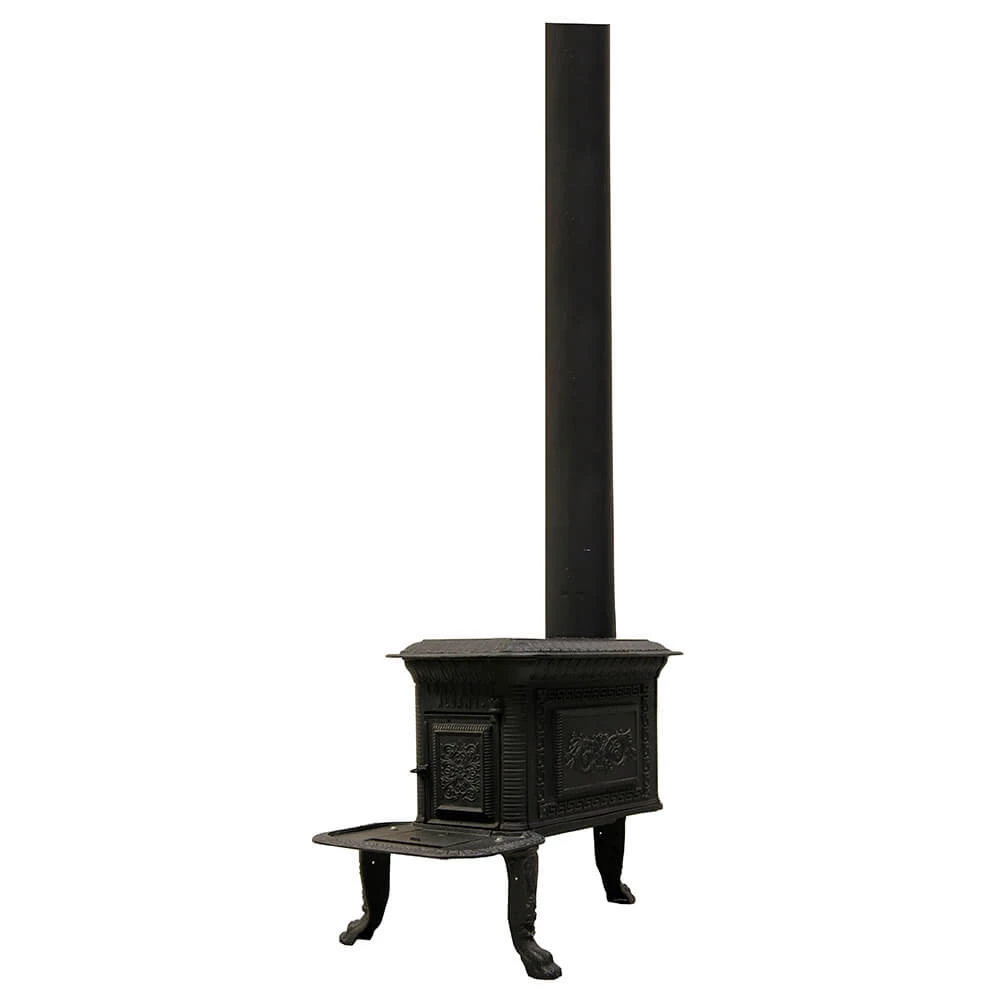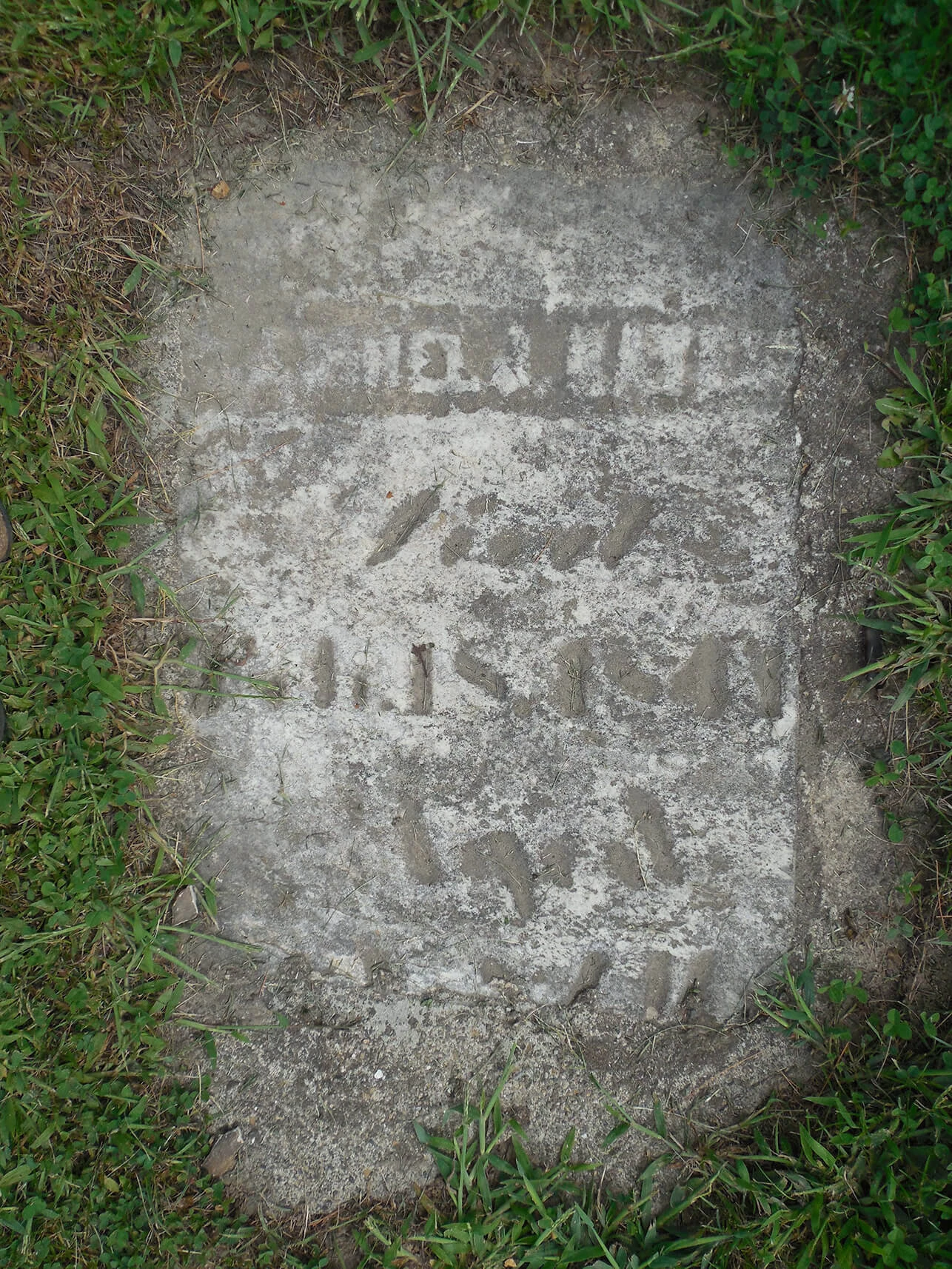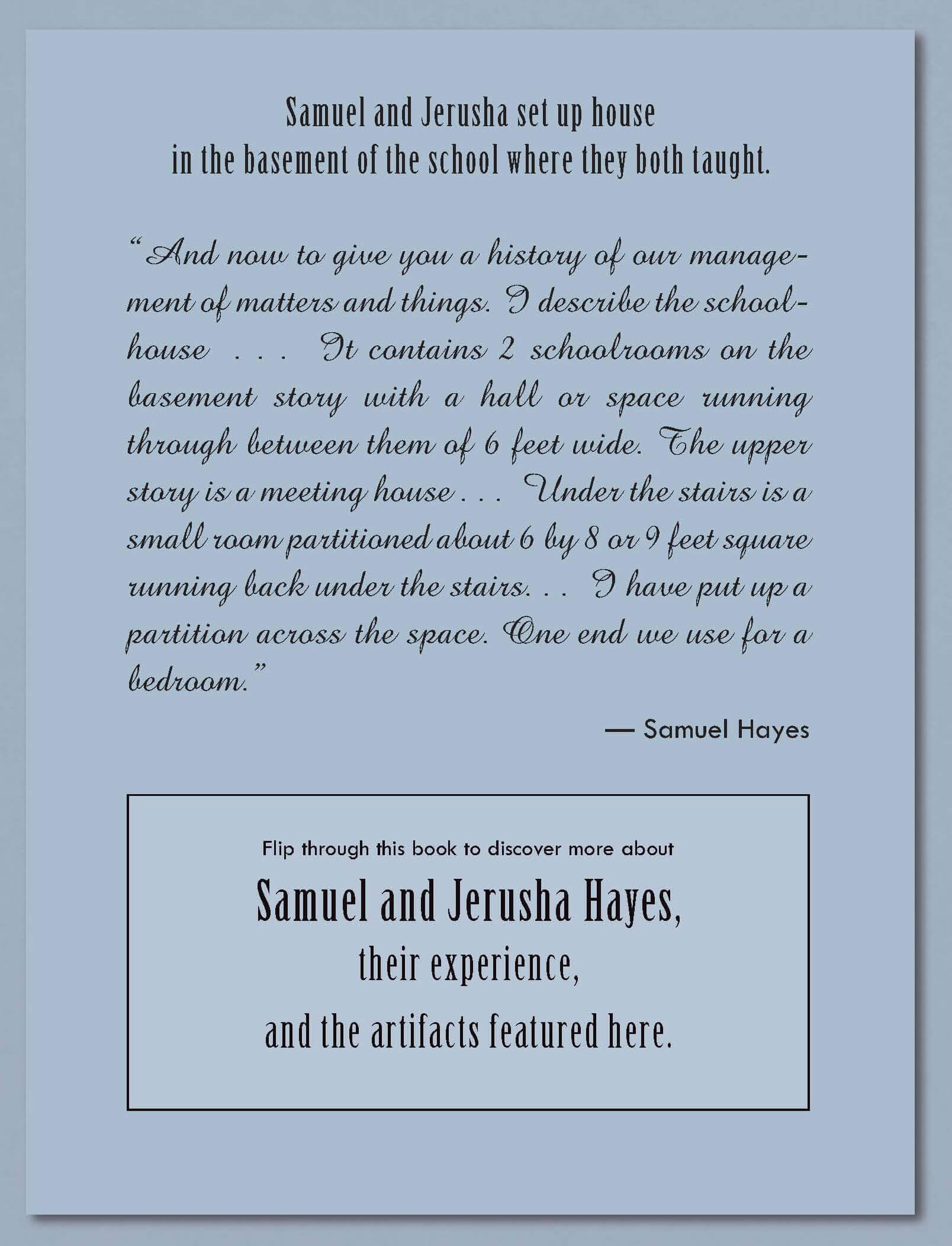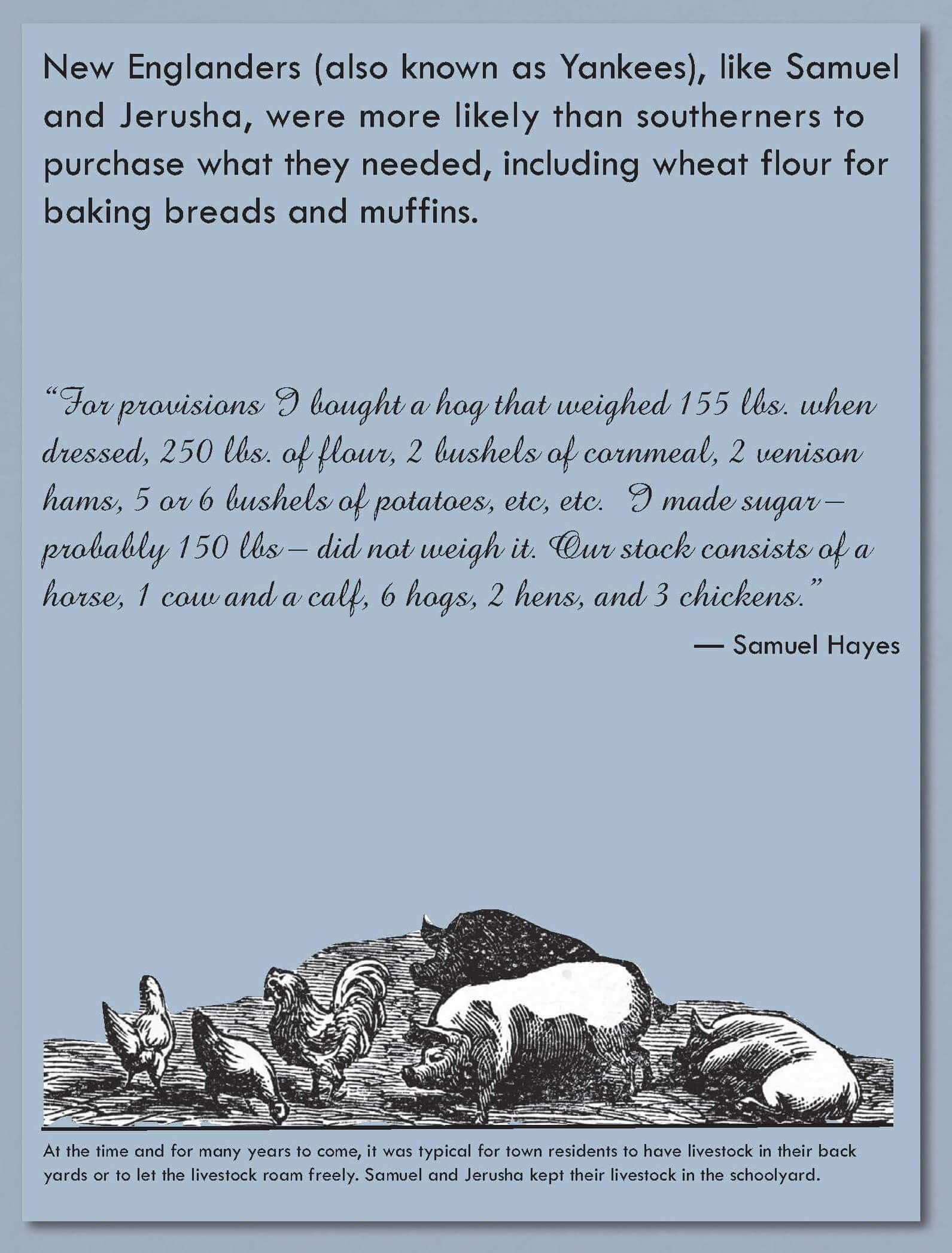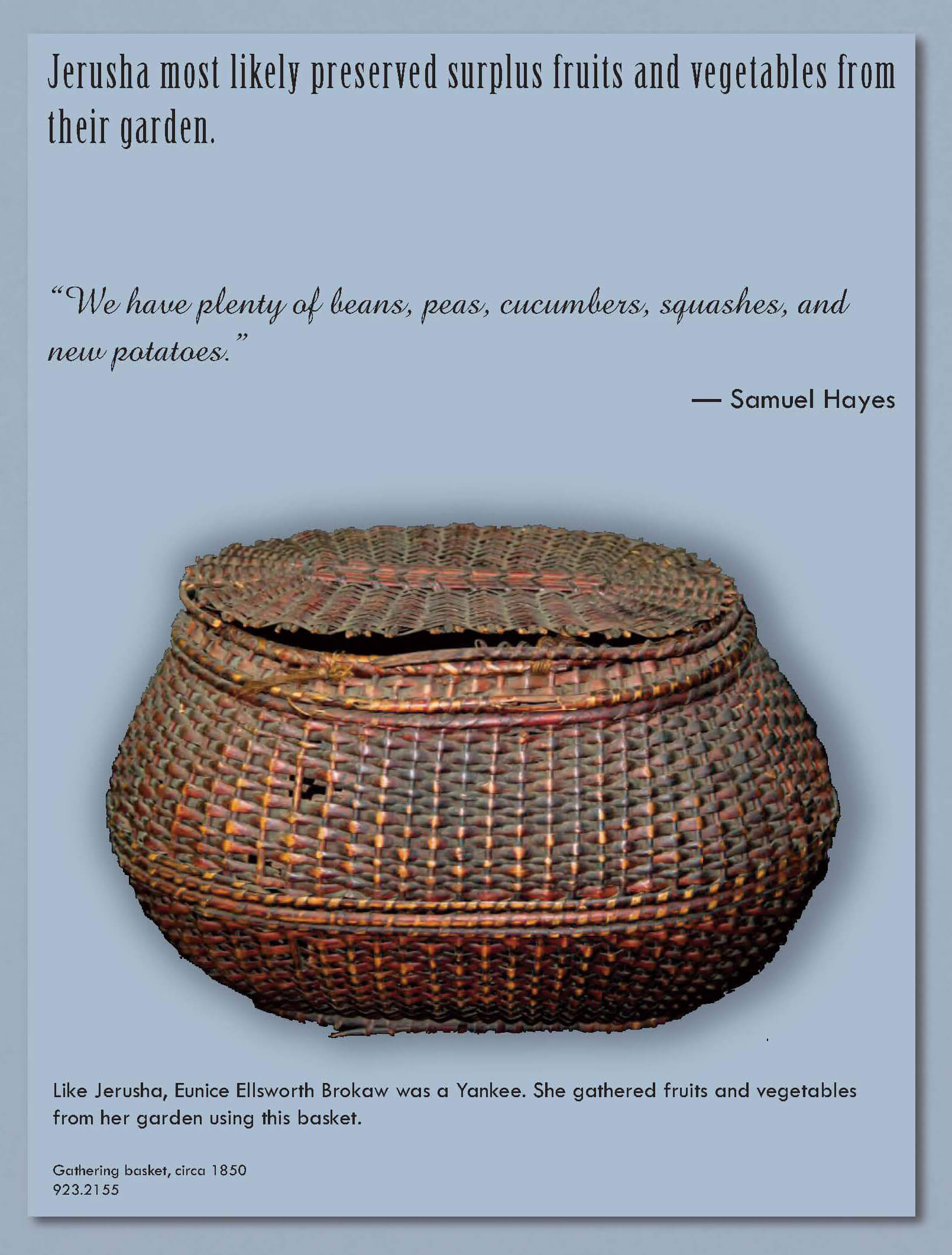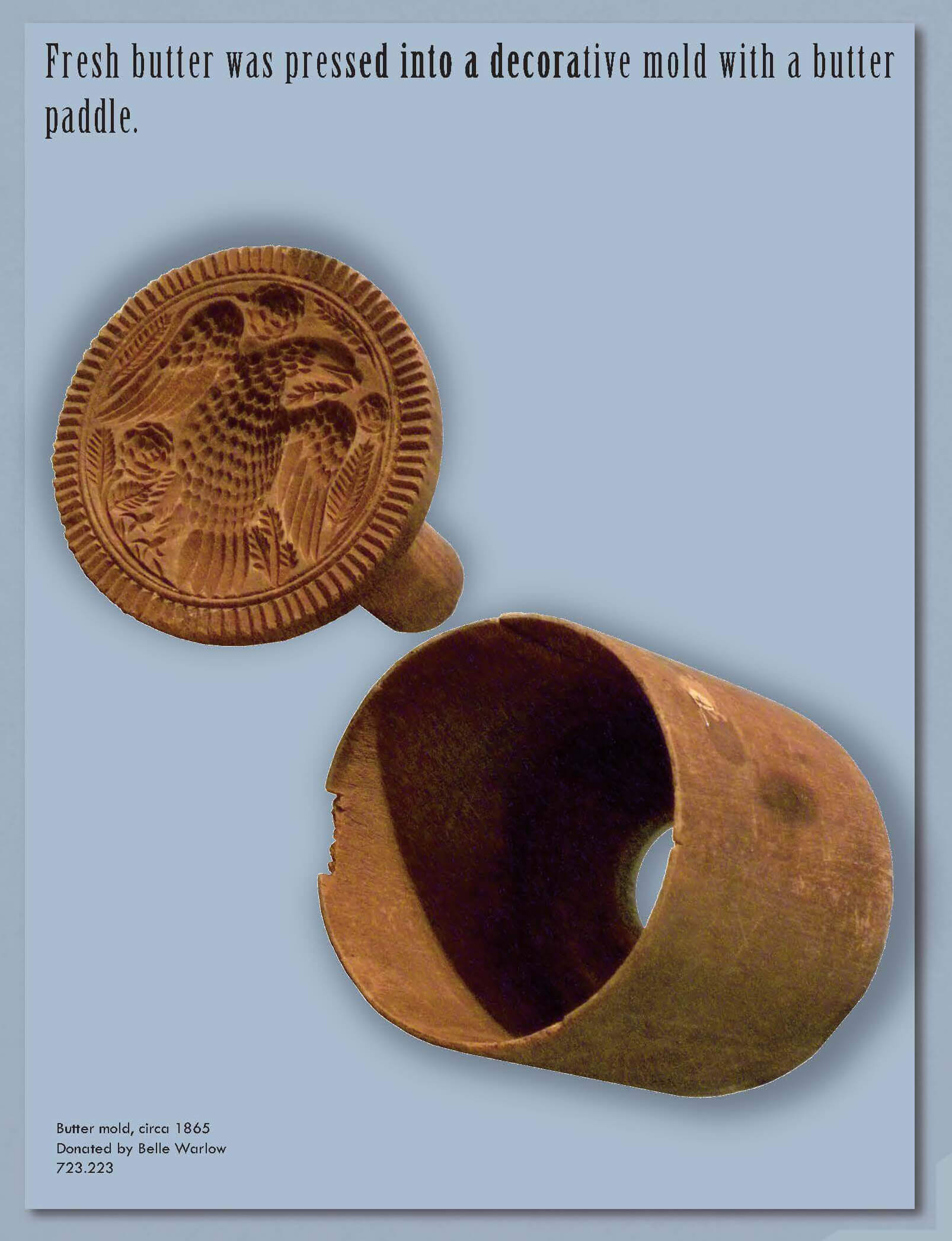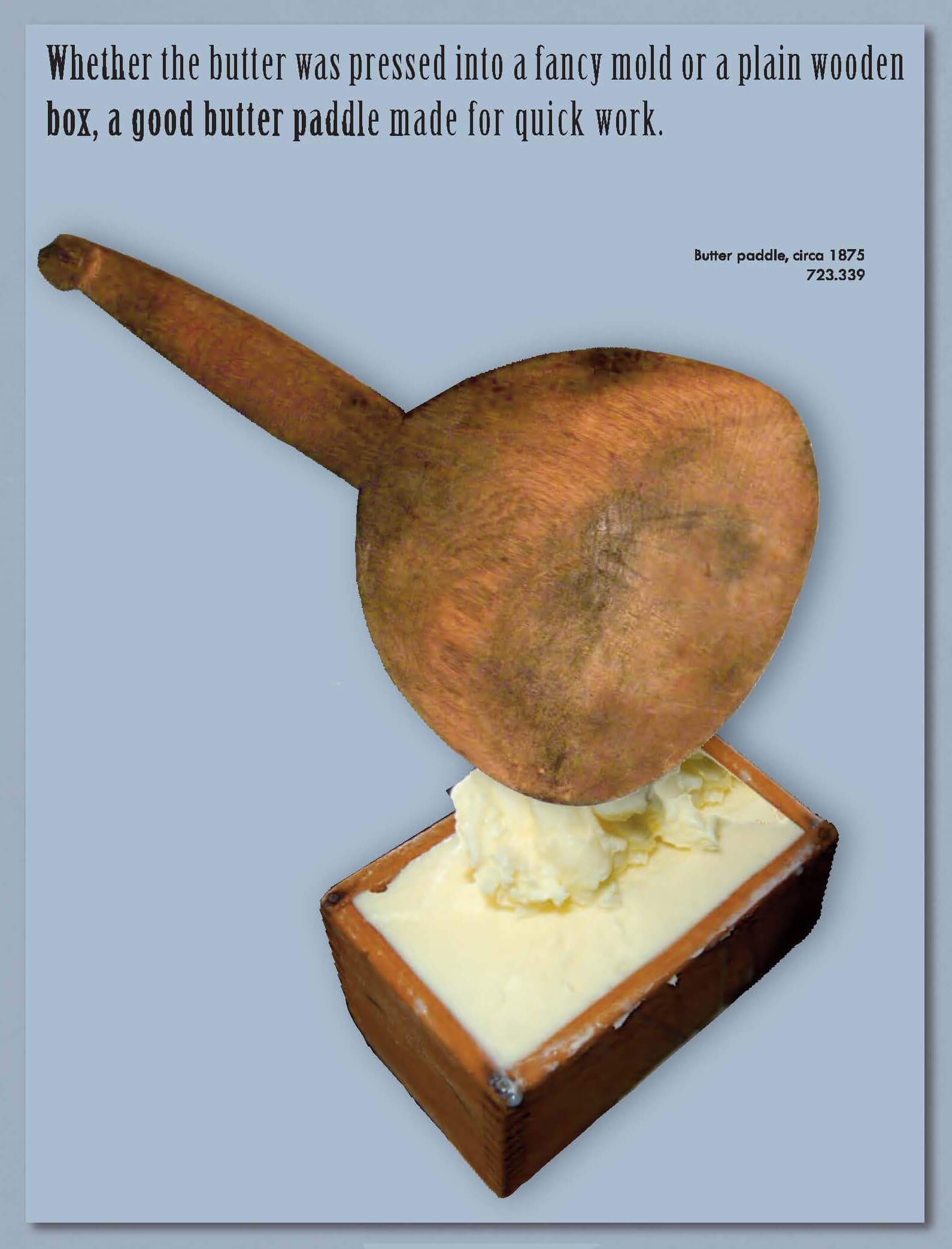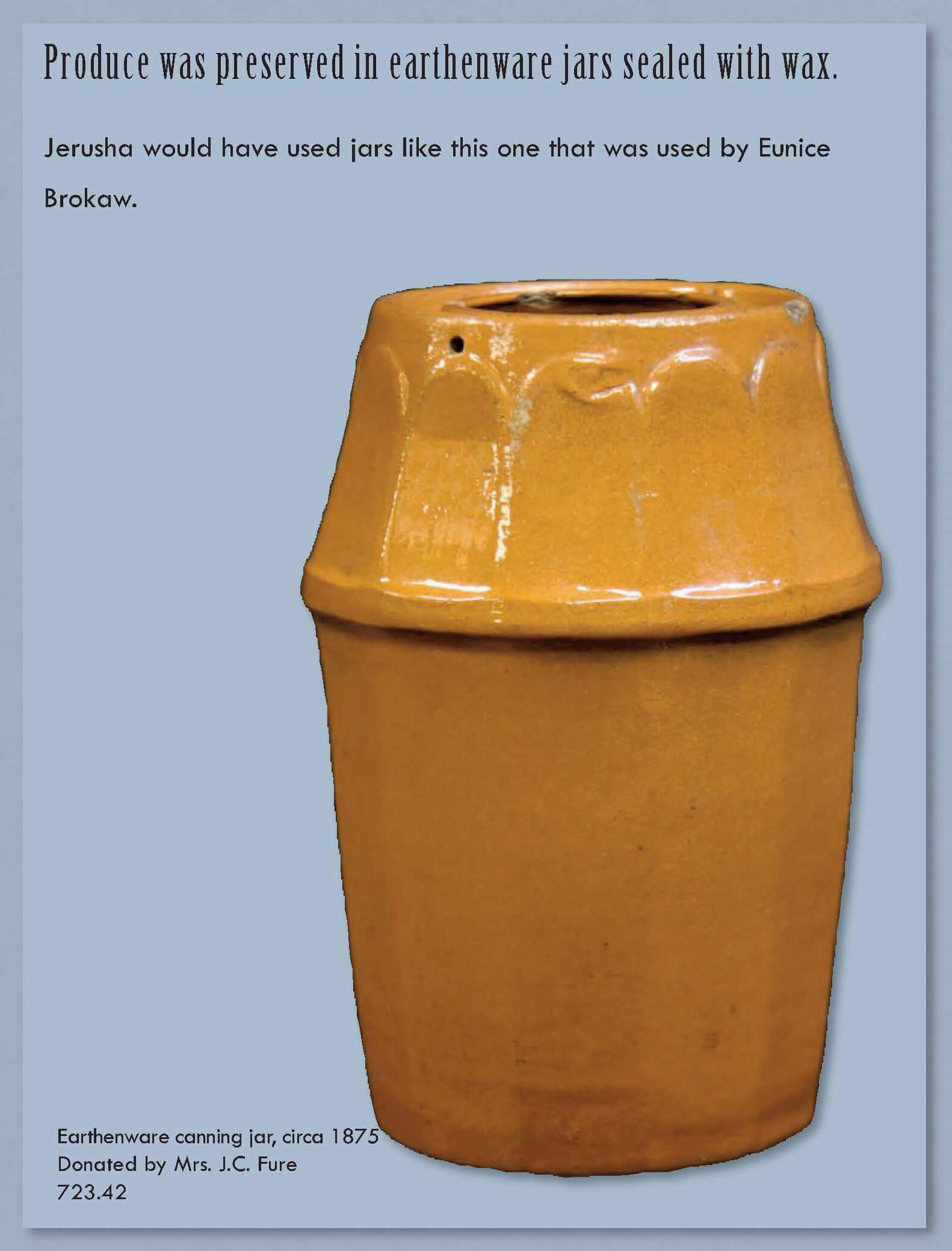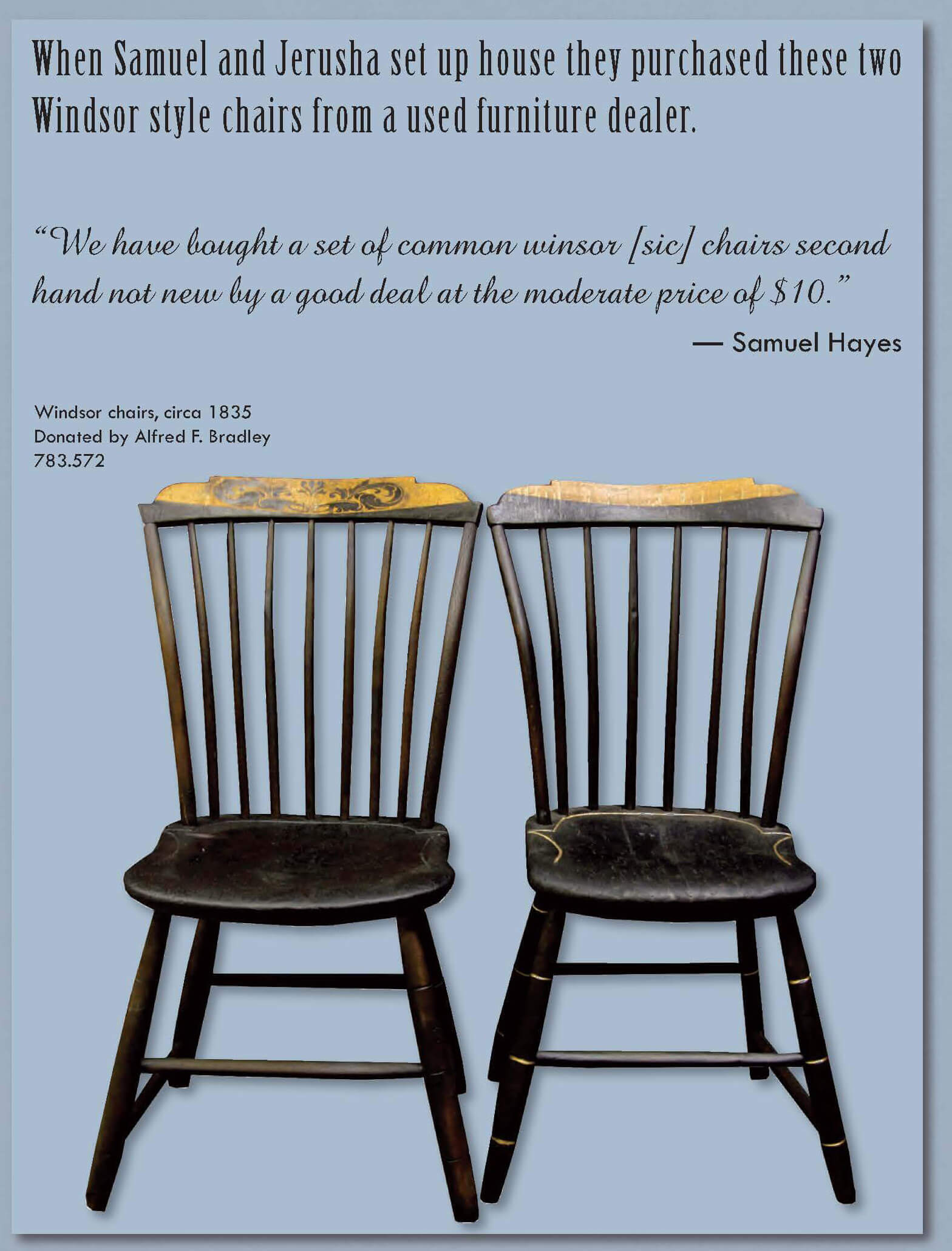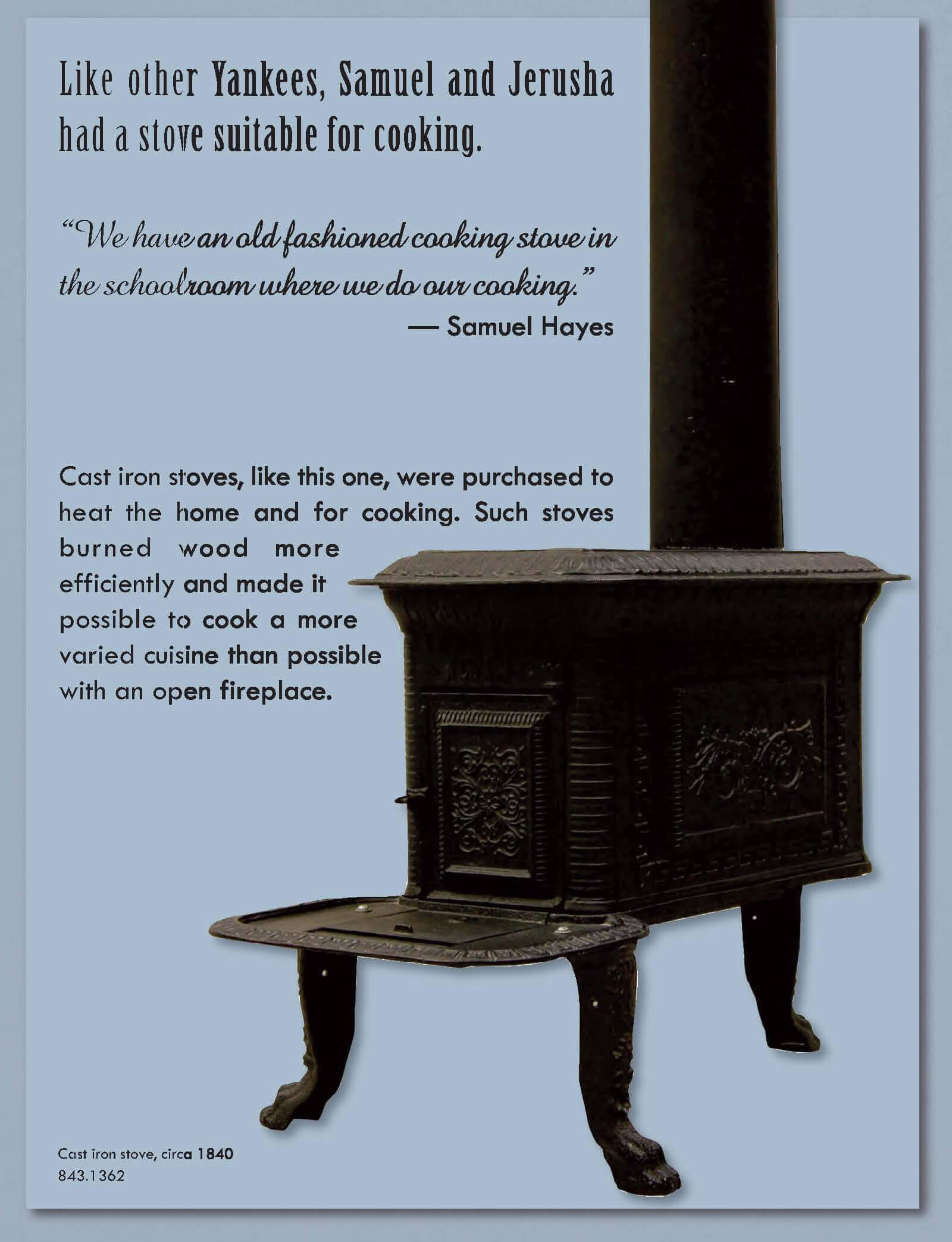The Great Rush – Samuel Hayes
For school teacher Samuel Hayes, the winter journey to Bloomington meant reconnecting with his sweetheart. Samuel left Hartford, Connecticut on November 9, 1836, and headed west on horseback. After nearly eight weeks of miserable conditions, he arrived in Bloomington.
“Language is not capable of giving a description of the dread occasioned by crossing a large prairie on a severe cold day with the wind blowing in one's face.”
— Samuel Hayes, in a letter to his mother and sisters, July 24, 1837
Samuel wasted no time.
He and Jerusha Cowdery were married just four weeks after his arrival.
“As wages were high and funds rather limited I thought rather than hire a housekeeper it would be better for me to take a partner. Having been as you know quite intimate with Miss J. Cowdery I made my plans known to her. She having reflected upon them for a few days approved them and concluded to become my partner...The ceremony of our co-partnership was ratified publicly on the evening of the 5th of February 1837.”
— Samuel Hayes, in a letter to his mother and sisters, July 24, 1837
Those who came west from the Northeast did so for many reasons. Because farm families were typically large and land was usually passed to the eldest son, younger siblings had to go elsewhere to find affordable land that was also productive. Land speculation, business opportunities, and a desire to provide schools and churches for those in need were also good reasons.
Woman's dress, circa 1836
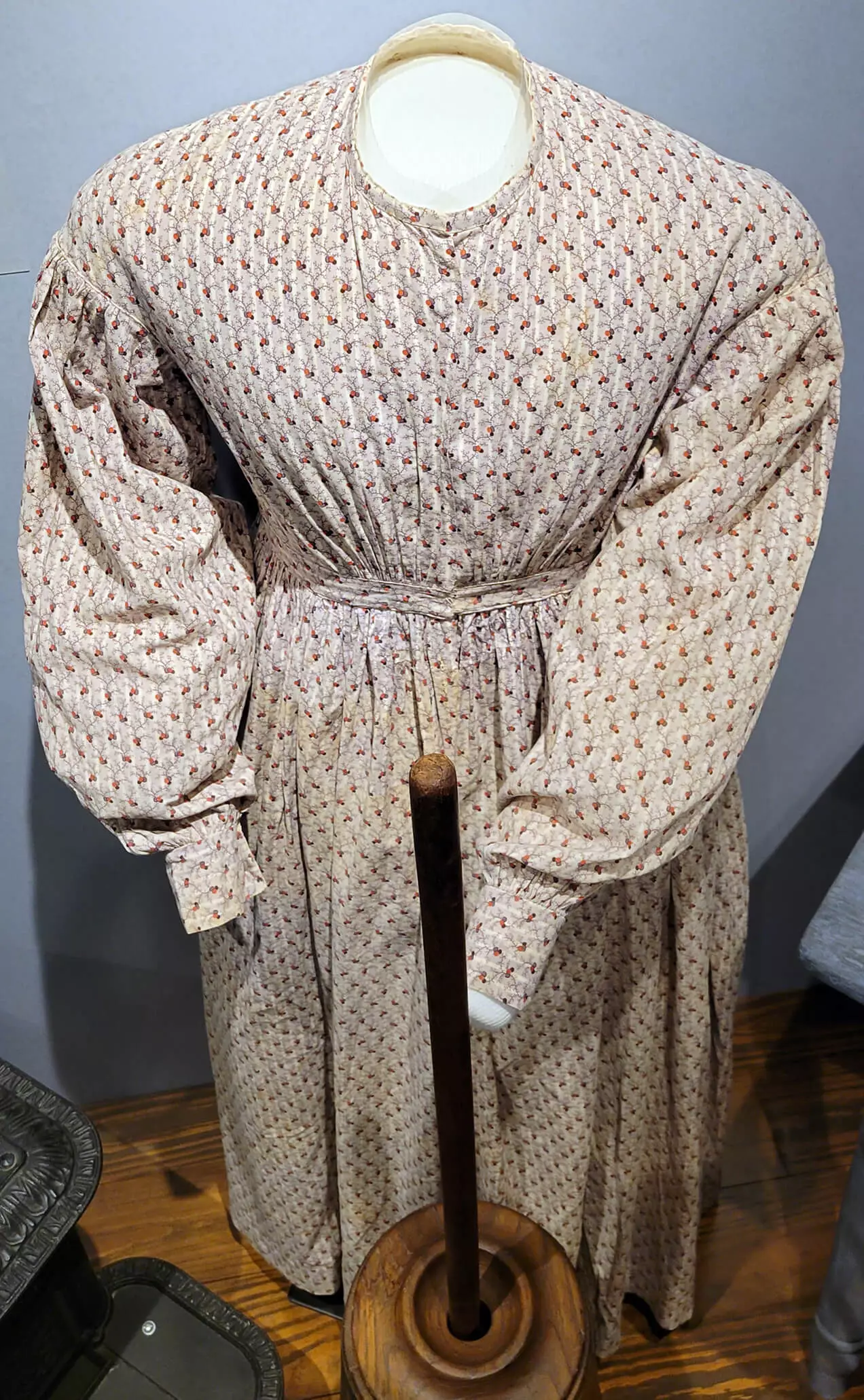
View this object in Matterport
Jerusha would have worn a dress very similar to this one, which belonged to Elizabeth Wilkenson-Plies. Like Jerusha, Elizabeth arrived in McLean County around 1836. This item of clothing is the oldest in the Museum's collection with provenance (history of ownership).
Donated by: Angeline Burnell
2015.34
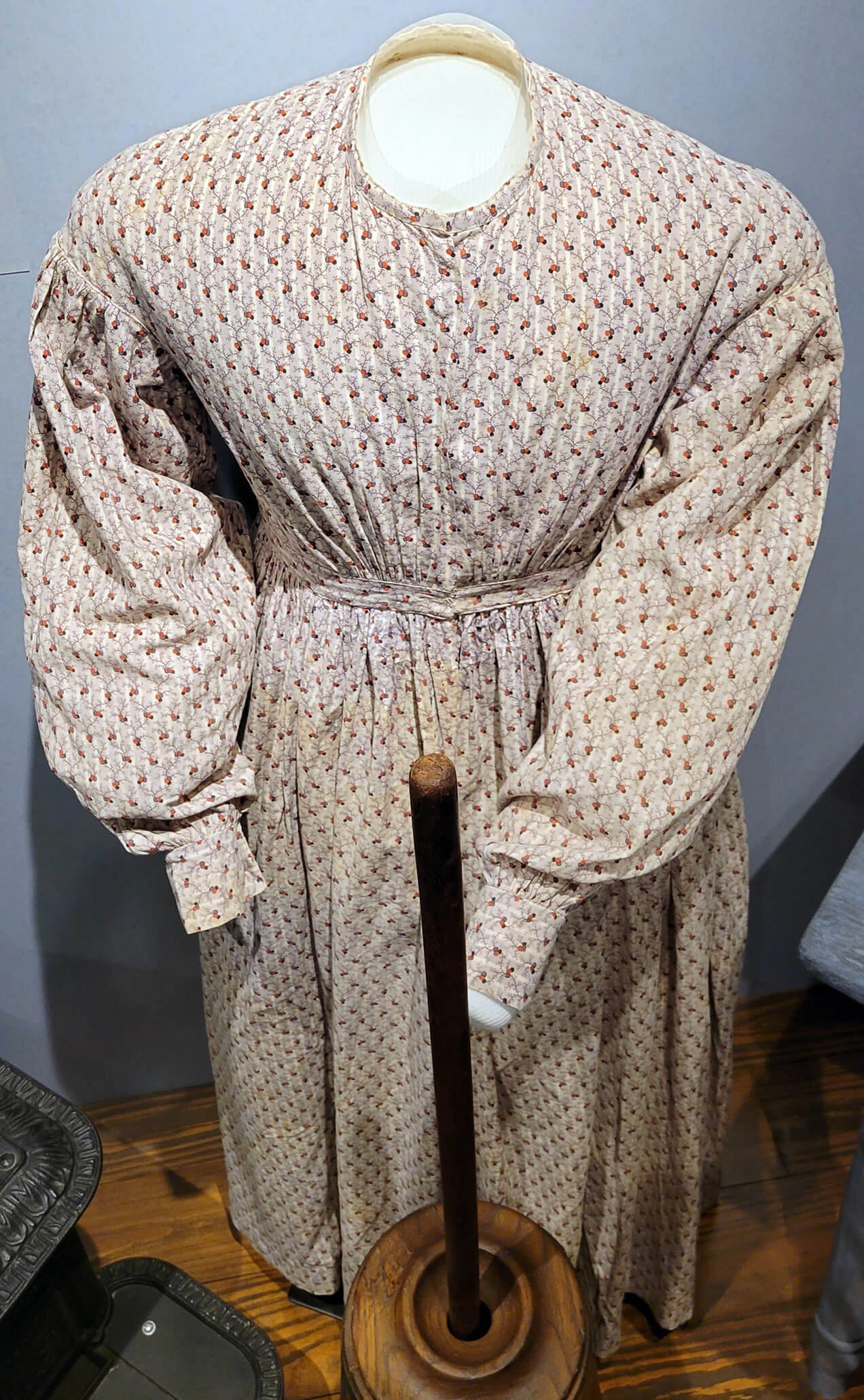
They Lived in the Basement of the School
Samuel and Jerusha set up house in the basement of the school where they both taught. As school teachers, their living arrangements would have been unheard of out east. But in Bloomington, where good school teachers were hard to come by, it was permitted.
The soft glow of the candle lantern likely illuminated the dark evening hours when Samuel and Jerusha may have sat in their secondhand chairs, writing school lessons or letters to family back east.
Samuel wrote a particularly long letter to his mother and sisters back east in July of 1837, just a few months after he and Jerusha were married.
Samuel found the going tough on his journey to Bloomington. He wondered at the logic of where bridges were built.
“The people in this Western country make bridges over mud and leave the streams for fording which in a time of high water makes it difficult and not unfrequently highly dangerous for people to attempt to cross. I was under the necessity of trying several days from these causes.”
— Samuel Hayes
Samuel was awed by the natural resources of Illinois.
“Bloomington and its vicinity is not surpass-ed and seldom equaled by another part of the western c-ountry either for beauty of location, health of climate, or fertility of soil.”
— Samuel Hayes
He was impressed by the industry of Bloomington's residents.
“You are a little behind the time to think that Bloomington is out of the business part of the world...Illinois has more advantage for comfort and luxury, wealth and distinction, than any other state in the Union and Bloomington is not far behind many of our eastern villages for business (ie) County seats. Bloomington contains at the present about 500 inhabitants. It has 2 meeting houses, 2 steam sawmills, an elegant brick courthouse, a log jail with one tenant, 7 stores, 2 inns, 2 grogshop s, etc., etc. The houses are mostly painted white which gives the village an air of neatness which I have not seen equaled in any part of the country except New England.”
— Samuel Hayes
Samuel began the construction of a large house on the 300 block of South Main Street soon after he and Jerusha were married. The new home was also intended for his widowed mother and six sisters still in Connecticut.
Samuel Completes His House
In 1840, his house completed, Samuel traveled to Connecticut, returning to Bloomington with his mother and sisters. But their joyous reunion was short lived.
A few weeks after their arrival in Bloomington, Samuel was seriously injured when a heavy log fell on him. He died a few days later. He was buried next to his wife in Bloomington Cemetery. He was 37 years old.
Hayes Flip Book
Flip through this book to discover more about Samuel and Jerusha Hayes, their experience, and the artifacts featured here.
 Making a Home
Making a Home
 A Community in Conflict
A Community in Conflict
 Working for a Living
Working for a Living
 Farming in the Great Corn Belt
Farming in the Great Corn Belt
 Abraham Lincoln in McLean County
Abraham Lincoln in McLean County

